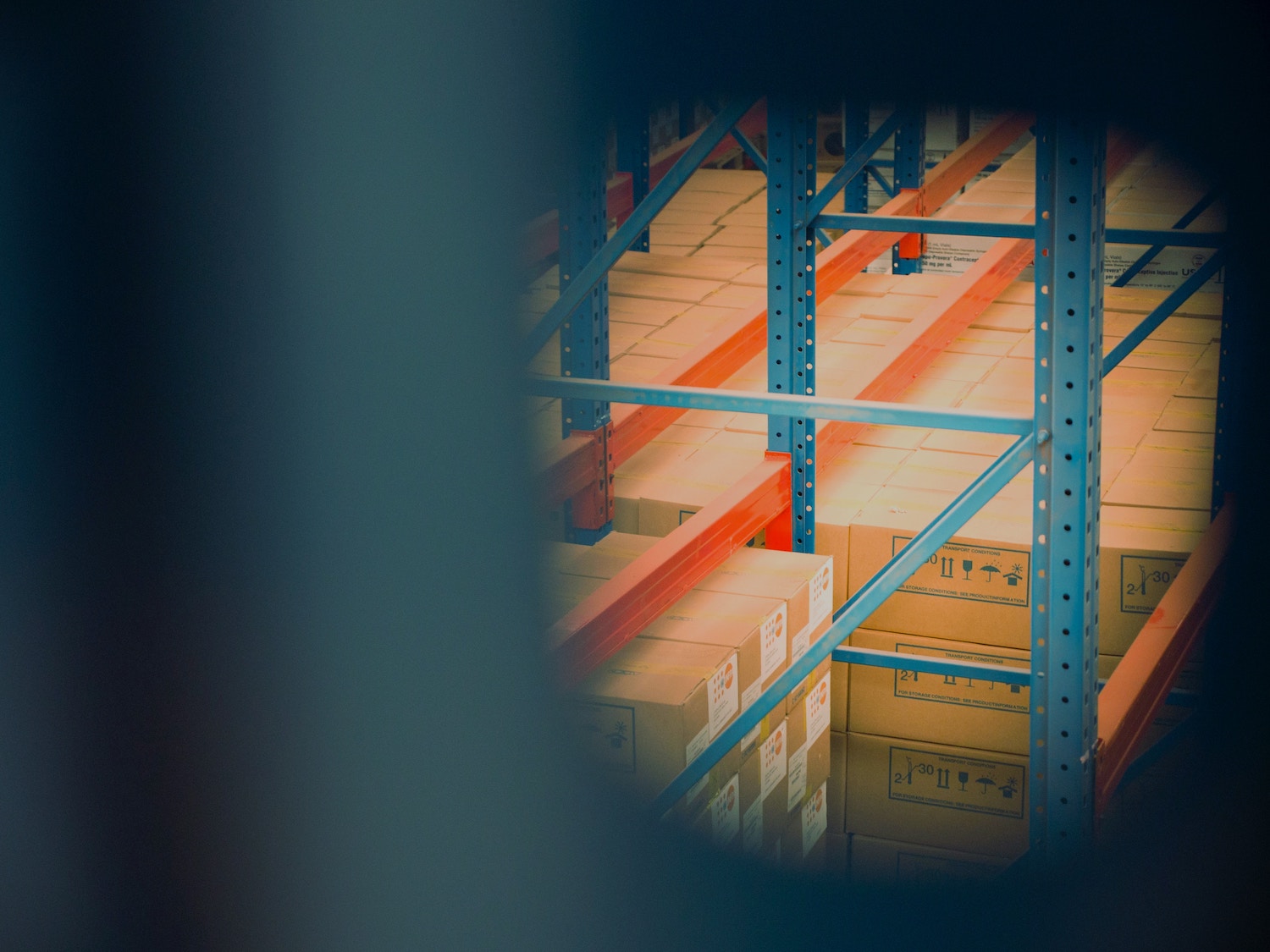Distributed inventory management (DIM) explained
What is distributed inventory management, how does it work, and why does it matter? Read on as we dive into some of the main benefits, challenges, and learn effective DIM management tips.

Ioana Neamt

While from the outside, logistics and shipping evoke mostly images of freight in motion or in storage, there are many moving pieces to the complex, carefully choreographed reality of inventory management.
There is both a science and an art to ordering, making, storing, and moving products in a seamless progression.
Below, we dive into some of the basics, benefits, challenges, and tips for effective management of everything that needs to happen for successful order fulfillment.
What is distributed inventory management?
Distributed inventory management (DIM) refers to the strategy of storing inventory in more than one location.
For instance, you can distribute your inventory across a combination of warehouse spaces, distribution centers, and retail stores. This approach makes sense for businesses that operate in more than one geographic region and/or trade in a wide variety of products.
How a distributed inventory management system works
One of the main goals of a DIM strategy is to ensure that your products move as quickly and as efficiently as possible. Ideally, you would employ distributed inventory management software that uses a central database to track inventory levels across all your storage locations.
In addition to having a real-time view of your inventory, a good system helps you make informed decisions about where to store and ship products. When a customer places an order, the DIM system automatically routes the order to the fulfillment center that holds the nearest available inventory of the order that was placed.
Benefits of a distributed inventory strategy
There are many benefits to adopting a distributed inventory management strategy. While some of them can depend on the particularities of your goods or your activity, there are some aspects that are essential to any business. These include:
- Customer service quality
- Shipping costs
- Supply chain risk mitigation
Improve customer service
By storing inventory closer to your customers, you position your business well for reduced shipping times and increased order fulfillment rates. Consequently, this can contribute to improved customer satisfaction. If you are consistent in good delivery performance, you are one big step closer to customer loyalty.
Reduce shipping costs
Similarly, storing inventory across multiple locations strategically relative to your customers allows you to ship products from the nearest location, which can reduce overall shipping costs. This is especially beneficial for businesses that sell heavy, bulky, or otherwise more demanding items.
Mitigate supply chain risks
By distributing inventory across multiple locations, you can ensure consistent reliability and availability for your customers through redundancy. DIM allows you to avoid or at least reduce the risk of supply chain disruptions caused by unforeseen events like natural disasters or labor disputes.
If, for whatever reason, you have difficulties shipping from one location, you have alternatives to rely on to ensure your customers receive their products on time.
Challenges of distributed inventory management

While there are certainly benefits to scaling up, there are also challenges. How to select the best-placed fulfillment centers? How to keep an eye on everything everywhere in real time? How to avoid stockouts, overstocking, or inaccurate order fulfillment? How to ensure the protection of your operations?
Infrastructure configuration
In order to select the most advantageous locations for your distributed inventory, it is very important that you have a good understanding and realistic estimates of factors such as:
- Customer demand
- Transportation costs
- Labor costs
- Real estate markets
Building your fulfillment network means investing in multiple warehouses or distribution centers that are located close enough to your customers while also being well-connected to each other.
Fulfillment complexity
When a customer places an order, you would ideally ship it from the fulfillment center that holds the nearest available inventory of that order. But what if the order includes items that must be brought together from more than one location? If not accounted for in inventory management, complexity can cause delays and inaccuracies.
Communication
It’s a big market out there, but operating across multiple regions, either nationally or globally, comes with its own kind of challenges. Solving problems in real time hits differently depending on the time zone, and you can’t be available everywhere, all of the time. You’ll want to ensure effective communication across your entire workforce of any foreseen vulnerabilities, potential obstacles, mitigation strategies, and inventory policies.
Cybersecurity
Data is vital to running seamless operations, and we need it to be fast, easy to work with, easy to access, accurate, and uninterrupted. The more your business grows, the more challenging it becomes to ensure the security of all the moving pieces in your operational flow. Cybersecurity considerations present a challenge that must be tackled as early and seriously as possible.
Key strategies to effectively manage distributed inventory
Distributed inventory management can be a dauntingly complex strategy. By carefully planning and implementing an appropriate distributed inventory management system, your business can successfully tackle the challenges and reap the benefits — improved inventory accuracy, reduced stockouts, enhanced order fulfillment, and reduced shipping costs. Below are a few essential elements to prioritize in your planning.
Accuracy
Real-time data synchronization is key to ensuring that you have accurate inventory data across all locations.
Monitoring
A distributed inventory management system should make it easy for you to reliably track inventory levels across all locations. Monitoring inventory levels and shipping performance closely will help you identify any potential problems and take corrective action as needed.
Replenishment
Developing a stock replenishment strategy is key to ensuring that inventory levels at each location are adequate to meet demand. The demand itself may vary from one location to another, and you might want to distribute safety reserves for redundancy for certain products across all locations. Whatever the particularities of your fulfillment flow, an optimal replenishment strategy will avoid both stockouts and overstocking.
Clear policies
It can be a very fast-paced business, and a lot of strategies depend on all the elements moving together optimally. It is very important to have clear inventory policies in place, such as for safety stock levels and reorder points, to avoid as many hiccups as possible.
Training
Obviously, it is in every business’ best interest to pick the best people for each of the jobs. But for all their natural potential, they cannot be their best at it without the proper training. You should make sure to train your staff on how to use your distributed inventory management system, your inventory policies, and why each element is important within the bigger picture of the business.
Coordination
Employing a good distributed inventory management system will help you coordinate shipments carefully. Consequently, your products will be shipped efficiently while giving you the best chances at keeping shipping costs at a minimum.
Streamline your distributed inventory management with Katana
While there are obstacles down the line that nobody can see coming, Katana offers cloud inventory software you can leverage to be prepared for whatever challenges you face. Katana’s intuitive design packs a lot of features to help businesses manage their distributed inventory, whether within the country or even across the globe, including:
- Support for multilocation inventory
- Multicurrency support
- Integration with other business tools, like Shopify and QuickBooks Online
- Insights to track sales performance and other business metrics
- Barcode scanning
- Tracking of serial numbers
Want to see Katana in action? Request a demo today.

Ioana Neamt
Table of contents
Get inventory trends, news, and tips every month
Get visibility over your sales and stock
Wave goodbye to uncertainty by using Katana Cloud Inventory for total inventory control
